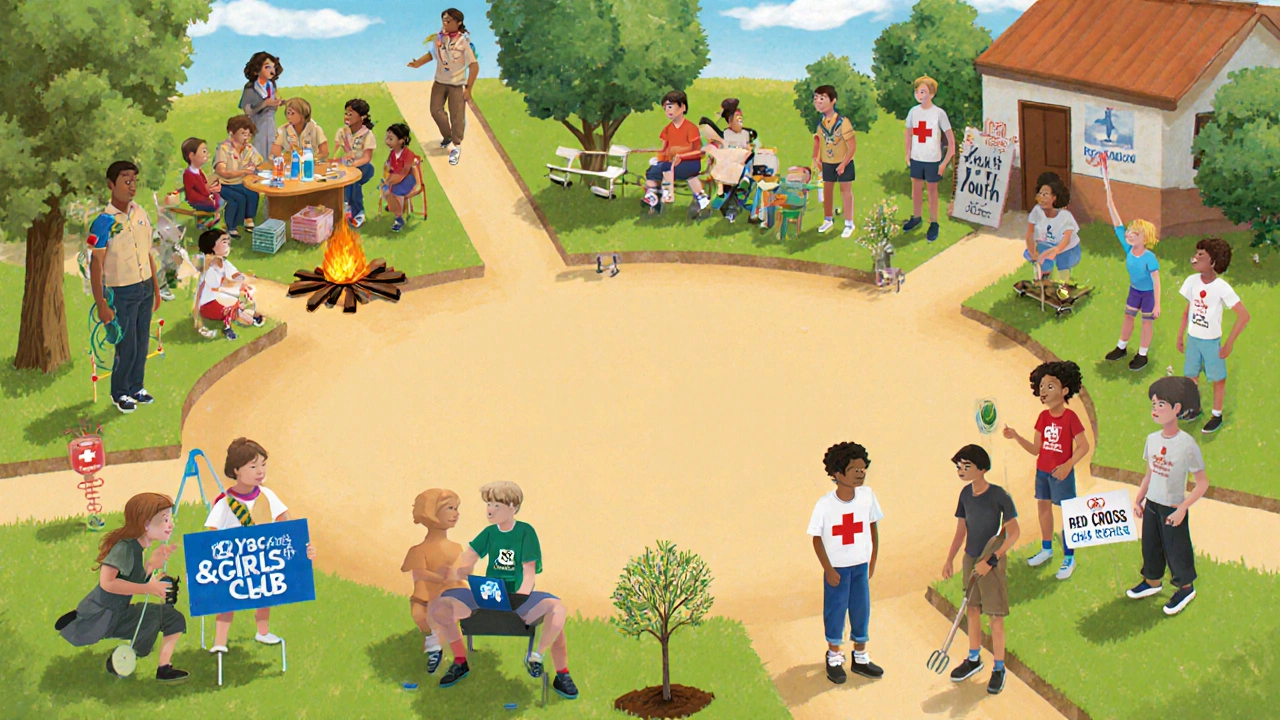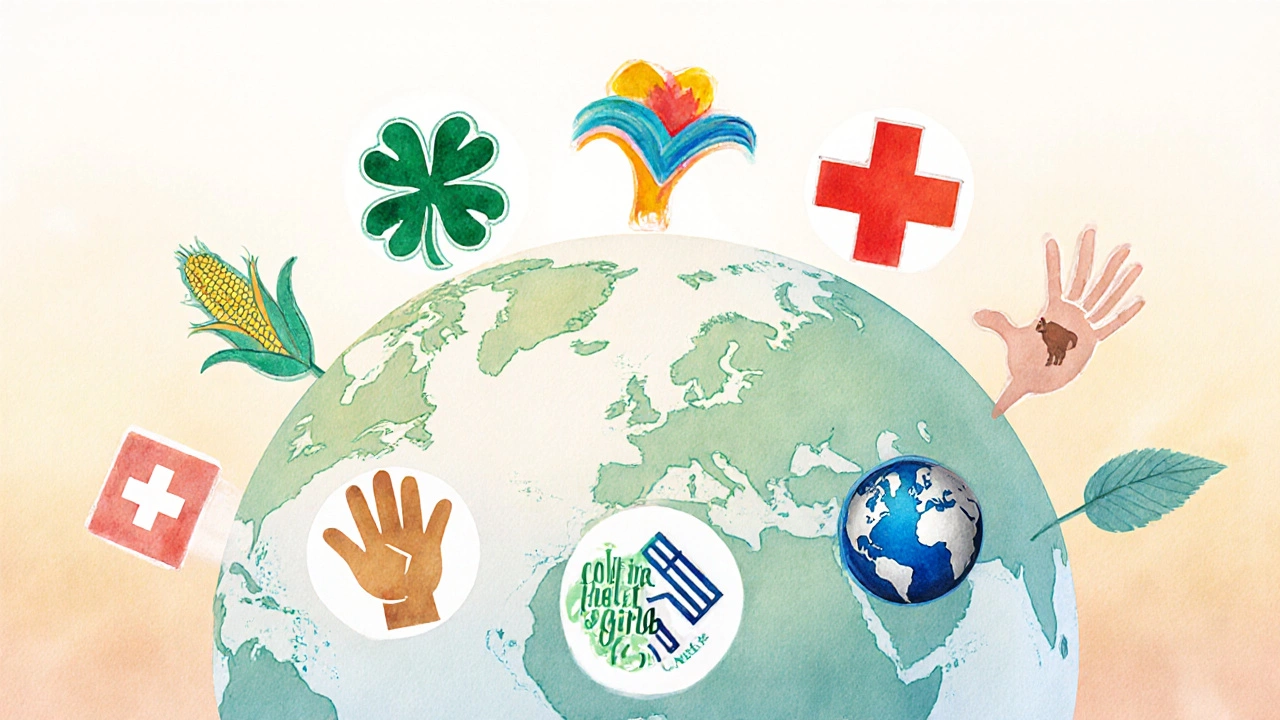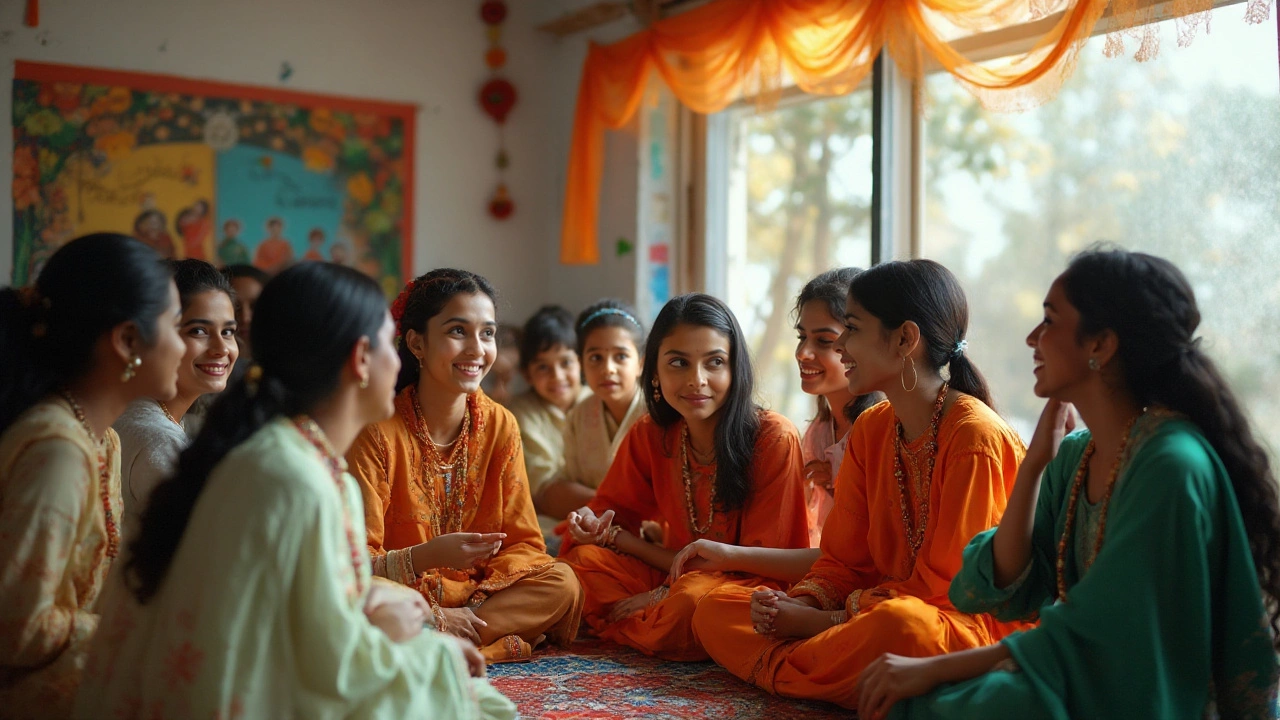Traditional youth organizations have played a crucial role in personal development and community involvement for generations. These groups offer young individuals opportunities for leadership development, teamwork, and learning new skills. By exploring examples of traditional youth organizations, we gain insight into how they help shape future leaders and foster a sense of community. Many of these organizations have adapted over time to stay relevant, integrating modern practices while preserving their core values.

- Created by: Lydia Carmichael
- Completed on: 1 Oct 2025
- Categories: Youth Programs
Find Your Perfect Youth Organization Match
Select your preferences and click "Find Matching Organizations" to see recommendations.
Quick Take
- Youth organizations span sports, service, advocacy, and cultural clubs.
- Major global examples include Scouts, 4-H, YMCA, Boys & Girls Clubs, Red Cross Youth, UNICEF Youth Advisory, Student Councils, and WWF Youth.
- Most groups welcome members from early teens to mid‑20s and often offer free or low‑cost programs.
- Getting involved usually means attending a local meeting, completing a brief application, and committing to a few activities per month.
- Use the checklist at the end to match your interests, schedule, and location with the right organization.
When you hear the term youth organizations, you’re looking at a wide range of groups that bring together people roughly between 12 and 25 years old to learn new skills, volunteer, and champion causes they care about. Youth organization is a non‑profit or community‑based entity focused on personal development, civic engagement, and peer support for young people. These groups can be faith‑based, secular, local, or international, but they all share the goal of empowering the next generation.
Why Youth Organizations Matter
Research from the University of Auckland (2023) shows that teens who regularly participate in organized activities are 30% less likely to drop out of school and 25% more likely to report high life satisfaction. The structure, mentorship, and sense of belonging that these groups provide help young people build confidence, leadership ability, and a network of supportive peers.
Global Examples You Can Model After
Below are eight well‑known youth organizations, each with a distinct focus and a proven track record.
- Scouts offers outdoor skills, community service, and leadership badges for ages 6‑26. Founded in 1907, Scouts operates in over 150 countries and reaches more than 40million members worldwide.
- 4‑H focuses on agriculture, science, and citizenship for youth aged 8‑19. In the U.S. alone, 6million participants engage in hands‑on projects each year.
- YMCA provides fitness, summer camps, and mentorship programs for teens and young adults. With more than 64million members globally, the YMCA emphasizes healthy living and social responsibility.
- Boys & Girls Clubs offers after‑school tutoring, STEM workshops, and sports for ages 6‑18. Over 4million U.S. youth benefit from club programs each year.
- Red Cross Youth engages volunteers aged 12‑30 in disaster preparedness, first‑aid training, and humanitarian campaigns. More than 1million young volunteers contribute annually.
- UNICEF Youth Advisory Panel gives teenagers a voice in global child‑rights policy and advocacy projects. Panels exist in 20+ countries, influencing funding decisions for child health and education.
- Student Council operates inside schools to represent student interests, plan events, and liaise with administration. Nearly every secondary school worldwide maintains a council.
- World Wildlife Fund Youth mobilizes young climate activists for conservation projects and policy outreach. The youth branch has grown 150% since 2020.

How These Groups Differ
Even though they all fall under the umbrella of youth organizations, each type serves a different purpose. Understanding the core focus helps you pick the right fit.
| Type | Typical Activities | Age Range | Primary Goal |
|---|---|---|---|
| Service‑oriented (e.g., Red Cross Youth) | Disaster drills, community clean‑ups | 12‑30 | Humanitarian impact |
| Skill‑building (e.g., Scouts, 4‑H) | Outdoor expeditions, hands‑on projects | 6‑26 | Personal development |
| Recreation / Health (e.g., YMCA) | Sports leagues, fitness classes | All ages | Physical well‑being |
| Advocacy (e.g., WWF Youth) | Campaigns, policy lobbying | 15‑25 | Social / environmental change |
| Leadership inside schools (Student Council) | Event planning, student representation | 13‑18 | Governance experience |
Steps to Get Involved
- Identify your interests: Do you prefer hands‑on projects, community service, sports, or advocacy?
- Search locally: Use city council websites, school newsletters, or community boards to find nearby chapters.
- Attend an open house or trial session: Most groups host a free introductory event.
- Complete any required forms: Usually a short application and a parental consent if you’re under 18.
- Commit to a schedule: Start with one activity per month to avoid burnout.
- Connect with a mentor: Many organizations assign a senior volunteer or staff member to guide newcomers.
In Wellington, for instance, the local YMCA offers a “Youth Fitness Saturday” program, while the Wellington Scouts troop meets every Thursday for outdoor skills. Both welcome first‑time visitors.
Choosing the Right Organization: Quick Checklist
- Does the group align with your personal passion? (e.g., environment, service, sports)
- Is the time commitment realistic for your school or work schedule?
- Are there affordable membership fees or scholarships?
- Do they provide mentorship or leadership pathways?
- Is the location convenient for regular attendance?
Frequently Asked Questions
What age groups do youth organizations usually serve?
Most groups target ages 12‑25, but some, like Scouts and the YMCA, welcome participants as young as 6 and as old as 30. Check each organization’s charter for specifics.
Do I need prior experience to join?
Almost no group requires experience. Most provide training - for example, Red Cross Youth teaches first aid from scratch.
Are there costs involved?
Many youth organizations are free or low‑cost. Some, like the YMCA, charge a modest membership fee, but scholarships and sliding‑scale rates are common.
Can I volunteer abroad through a youth organization?
Yes. Programs like Scouts and 4‑H offer international exchange trips, and UNICEF Youth often runs global advocacy campaigns that include travel opportunities.
How do I know if a youth organization is reputable?
Look for a registered charitable status, transparent financial reports, and positive reviews from current members. Major franchises like the Boys & Girls Club maintain national oversight and accountability standards.
Whether you’re looking for an adventure, a cause to champion, or a place to make new friends, there’s a youth organization out there that fits your vibe. Use the steps and checklist above, and you’ll be on your way to a richer, more connected teenage years.
Youth organizations play a pivotal role in nurturing young minds and channeling their energies toward positive societal changes. These groups focus on varied aspects like education, environmental conservation, cultural exchange, and leadership development. Highlighting ten notable youth organizations, this article explores how these groups are making a significant impact globally. It also offers insights into their missions, achievements, and ways for young people to get involved. From grassroots initiatives to large-scale international efforts, discover how youth organizations are shaping the future.
Explore real-world youth organizations, their focuses, and how teens can join. Includes global examples, a comparison table, step‑by‑step guide, and FAQs.

